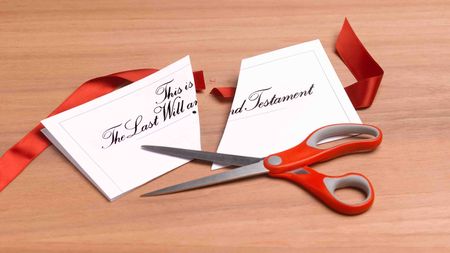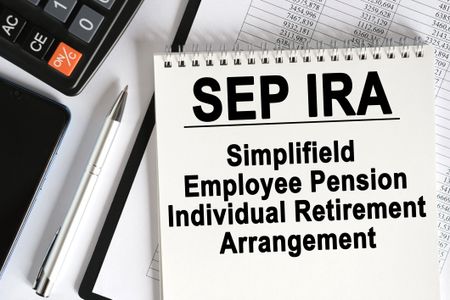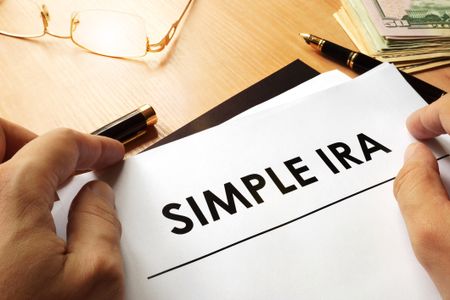Should You Roll Over Your 401(k)to an IRA?
When you leave your employer, you need to weigh the pros and cons of moving your retirement savings.
EDITOR'S NOTE: This article was originally published in the June 2010 issue of Kiplinger's Retirement Report. To subscribe, click here.
When Warren Smith's employer laid him off earlier this year, he had to make a decision that all new retirees face. He needed to decide whether to roll his 401(k) into an IRA.
Smith, 62, had been contributing 22% of his salary to his employer plan. The company, which coordinates corporate events, now uses him as a contractor, but he is not allowed to contribute to the 401(k). "I didn't feel comfortable keeping my money there," says Smith.

Sign up for Kiplinger’s Free E-Newsletters
Profit and prosper with the best of expert advice on investing, taxes, retirement, personal finance and more - straight to your e-mail.
Profit and prosper with the best of expert advice - straight to your e-mail.
Also, Smith needed to make sure that his savings would last for decades, and he didn't think that the six mutual funds that the 401(k) offered would do the trick. Smith, who lives in El Cajon, Cal., says, "I didn't have the diversification that I have in an IRA." He decided to roll his 401(k) money into an IRA and hired an investment adviser to help manage his nest egg.
As baby-boomers join the retiree ranks, they are facing the same roll-or-not-to-roll decision. And many middle-aged workers, forced to find new jobs after being laid off from their old ones, must decide whether to leave their retirement stash with the old employer or move it to an IRA.
For the financial-services industry, millions of these decisions will add up to billions of investment dollars. More than 50 million employees and retirees hold $3 trillion in 401(k) plans, according to the Investment Company Institute.
Brokerage firms and mutual fund companies are in frenzied competition to capture your business. "That old 401(k) isn't going to take care of itself -- do something about it," demands the Charles Schwab Web site. TD Ameritrade and E*Trade are offering up to $500 to buy your rollover business.
And, employers are becoming increasingly possessive about 401(k) balances. Until recently, most employers didn't want the administrative hassle of maintaining former workers' accounts. Now one-third of all retirement plans, and two-thirds of plans with $1 billion or more, want to keep retirees in the plan after retirement, according to a study by Casey Quirk, a consulting firm.
Casey Quirk partner David Bauer says retirees often have the largest account balances. "If retirees roll assets out, it reduces a plan sponsor's ability to negotiate with plan providers for lower fees," he says. More employers are trying to keep 401(k) participants by offering low-cost index and exchange-traded funds, target-date retirement funds and annuities.
Should You Stay Or Should You Go?
Despite moves by employers to sweeten the deal, it makes sense in most cases for retirees and job switchers to roll their 401(k) money into a traditional IRA or a Roth IRA. Typically, company plans offer limited investment choices. "If you roll your money into an IRA, you have access to more investment options," says David Zuckerman, a certified financial planner in Los Angeles.
You also have the flexibility with an IRA to withdraw money whenever you need it. Not so with the typical 401(k). "Plans may restrict how you take the money out," says Rick Meigs, president of 401khelpcenter.com.
Withdrawal rules for 401(k)s vary, so check with your human-resources department before you decide what to do. Some limit the frequency of withdrawals. Others set all-or-nothing restrictions: A retiree who wants to take a distribution must withdraw all account assets. That would make it impossible to use your 401(k) to create a regular income stream during your retirement.
If you're looking for simplicity, consolidate all of your 401(k) accounts into a single IRA. With all of your retirement savings in one place, it's easier to monitor your investments, set appropriate asset allocations and rebalance.
It's also easier to handle your required minimum distribution after you turn 70 1/2, says Stuart Ritter, a certified financial planner with T. Rowe Price. With traditional IRAs, your RMD is based on the total amount in all your IRAs, and you can take the money from any account or any combination of accounts. If you have a 401(k) at age 70 1/2, you must calculate that RMD separately and take the money from that account. (There are no RMDs for Roth IRAs.)
An IRA also has estate-planning benefits: maximizing the chances that your heirs can take tax-deferred distributions over their lifetimes. Most 401(k) plans force heirs to take assets after the account holder dies.
Of course, beneficiaries can roll the inherited 401(k) into an IRA. But a rollover can be tricky, so you're best off handling the transfer yourself rather than leaving your heirs to deal with a plan administrator. "If they inherit a 401(k), they'll have to get the employer to do a direct transfer to an IRA," says Ed Slott, author of Your Complete Retirement Planning Road Map (Ballantine, $16). "You have to rely on the plan to do it right."
There are times when it makes sense to stick with the 401(k) -- at least for a while. If you retire or get laid off between ages 55 and 59 1/2, you can take penalty-free withdrawals from a 401(k). "You'll pay income taxes, but you won't have to pay the 10% penalty," says Slott. If you roll your money into an IRA, you must wait until age 59 1/2 to withdraw without a penalty.
It doesn't have to be an either-or proposition. If your plan allows, you can leave enough money in the 401(k) to cover expenses or possible emergencies until 59 1/2, while moving the rest to an IRA.
You might want to leave some money in a 401(k) if it is invested in fixed-income options with decent yields. If part of your 401(k) is invested in a guaranteed income contract, for example, consider keeping it where it is and transfer the balance to an IRA, says James Lange, author of Retire Secure! Pay Taxes Later (Wiley, $25). These investment instruments are contracts with insurance companies that offer a fixed rate of return over a set period of time. You cannot transfer a contract to an IRA.
[page break]
If you have 401(k) money invested in guaranteed contracts or stable-value funds, check the yield and compare it with the bonds you could buy for your IRA. "You really have to take a look at the quality and the rate of the fixed-income portion of your 401(k) before deciding to roll into an IRA," Lange says.
Another reason to stick with a 401(k) is if you need protection from creditors. Creditors in bankruptcy proceedings and plaintiffs in civil lawsuits can't touch your 401(k). With IRAs, these protections are limited and differ by state. "If you are in a high-risk profession, it might make sense to leave your money in a 401(k) plan because it offers better protection than an IRA," says Evelyn Zohlen, a certified financial planner with Inspired Financial, in Huntington Beach, Cal.
If you're 70 1/2 and still working, there's an advantage to keeping the 401(k) intact. As long as you're on the job, you don't have to take RMDs from your 401(k) unless you own more than 5% of the company. With an IRA, you must start taking RMDs after you reach 70 1/2, whether or not you're still working.
Also, new rules allow your nonspouse beneficiaries to roll an inherited 401(k) to a Roth IRA. If you roll your 401(k) to an IRA, nonspouse heirs cannot convert an inherited traditional IRA to a Roth.
For some retirees, the staying-put strategy is simply the more-comfortable path. "Are you willing and ready to go out on your own and manage an IRA?" says David Wray, president of the Profit Sharing and 401(k) Council of America.
Figuring Out The Fees
Another factor in your decision is tough to decipher: How does the cost of investing inside the 401(k) compare with what you'd pay if your money was in an IRA? You may have a hard time figuring that out because the plan’s administrative and record-keeping fees are not listed on individual investment statements.
The first step is to check the expense ratio of each fund offered by your company plan. You can find the expense ratio, which is the percentage the fund manager demands to cover its expenses, on the fund's Web site or perhaps on your plan's Web site. An expense ratio of 1% or less is reasonable. If you invest in an IRA, you can find many funds with low expense ratios.
A new tool can help if you work at one of the 45,000 companies whose plans have been rated, based on administrative costs, investment fees, returns and quality of investment choices, by BrightScope, based in San Diego. Visit www.brightscope.com, enter your company name, and the software kicks out a score between 1 (the worst) and 100 (the best). "People often discover their 401(k) is more expensive than the fees they would pay in an IRA," says Mike Alfred, chief executive officer of BrightScope. Total plan costs for the largest plans can be as low as 1%, but some small plans charge more than 3%.
If you go the IRA route, it's up to you to hold down costs by choosing low-cost funds, for example, or a discount broker. If you want ongoing professional management, find an adviser who won't charge you more than 1.5% of total assets a year.
Before making a decision, Steve Goodno, 64, a resident of Orange, Cal., asked his company's human-resources department for a list of his 401(k) fees. Goodno, who is about to retire as a manager from a large engineering company, then compared the fees to what it would cost to hire an investment manager.
He opted for the IRA rollover. "The IRA was the more reasonable cost option," he says. Goodno says the fee issue was one factor in his decision to leave the 401(k). He also wanted more investment choices and control over his retirement plan.
When moving 401(k) assets into an IRA, be sure to follow the strict rules governing rollovers. You can use an existing IRA or open a new one. Fill out the forms with the IRA custodian. You'll also need to fill out forms with your 401(k) administrator. Make sure the administrator directly transfers the money in what's called a trustee-to-trustee transfer.
If the plan administrator instead hands you a check written in your name, it's considered a taxable distribution and the plan must withhold 20% of the amount for the IRS. You will need to come up with the 20% from other sources when you deposit the check in the IRA. You have 60 days to get the check into the IRA. If you miss the deadline, the IRS will tax the entire amount and you will lose the chance for tax-deferred growth.
There's a twist if your 401(k) holds stock of your employer that has appreciated significantly. In this case, you can take advantage of a tax break for "net unrealized appreciation," also known as NUA. When you take a lump sum from the 401(k), you transfer the company shares directly to a taxable account and the rest to the IRA.
You will pay ordinary-income tax, at a rate of up to 35%, only on the price the company paid for the stock. You will enjoy the long-term capital-gains rate (currently topping out at 15%) on any appreciation since you bought the shares. That bill comes due only when you eventually sell the shares. If instead you roll the company stock into an IRA, you will owe ordinary-income tax on all appreciation when you make withdrawals from the account.
Get Kiplinger Today newsletter — free
Profit and prosper with the best of Kiplinger's advice on investing, taxes, retirement, personal finance and much more. Delivered daily. Enter your email in the box and click Sign Me Up.
-
 RMD Deadline April 1: Five Tax Strategies to Manage Your 2025 Income
RMD Deadline April 1: Five Tax Strategies to Manage Your 2025 IncomeTaxable Income The April 1, 2025, deadline for required minimum distributions (RMDs) is fast approaching for retirees who turned 73 in 2024.
By Kelley R. Taylor Published
-
 Rising AI Demand Stokes Undersea Investments
Rising AI Demand Stokes Undersea InvestmentsThe Kiplinger Letter As demand soars for AI, there’s a need to transport huge amounts of data across oceans. Tech giants have big plans for new submarine cables, including the longest ever.
By John Miley Published
-
 457 Plan Contribution Limits for 2025
457 Plan Contribution Limits for 2025Retirement plans There are higher 457 plan contribution limits for state and local government workers in 2025. That's good news for state and local government employees
By Kathryn Pomroy Last updated
-
 Medicare Basics: 11 Things You Need to Know
Medicare Basics: 11 Things You Need to KnowMedicare There's Medicare Part A, Part B, Part D, Medigap plans, Medicare Advantage plans and so on. We sort out the confusion about signing up for Medicare — and much more.
By Catherine Siskos Last updated
-
 The Seven Worst Assets to Leave Your Kids or Grandkids
The Seven Worst Assets to Leave Your Kids or Grandkidsinheritance Leaving these assets to your loved ones may be more trouble than it’s worth. Here's how to avoid adding to their grief after you're gone.
By David Rodeck Last updated
-
 SEP IRA Contribution Limits for 2025
SEP IRA Contribution Limits for 2025SEP IRA A good option for small business owners, SEP IRAs allow individual annual contributions of as much as $69,000 in 2024 and $70,000 in 2025..
By Jackie Stewart Last updated
-
 Roth IRA Contribution Limits for 2025
Roth IRA Contribution Limits for 2025Roth IRAs Roth IRA contribution limits have gone up. Here's what you need to know.
By Jackie Stewart Last updated
-
 SIMPLE IRA Contribution Limits for 2025
SIMPLE IRA Contribution Limits for 2025simple IRA The SIMPLE IRA contribution limit increased by $500 for 2025. Workers at small businesses can contribute up to $16,500 or $20,000 if 50 or over and $21,750 if 60-63.
By Jackie Stewart Last updated
-
 457 Contribution Limits for 2024
457 Contribution Limits for 2024retirement plans State and local government workers can contribute more to their 457 plans in 2024 than in 2023.
By Jackie Stewart Published
-
 Roth 401(k) Contribution Limits for 2025
Roth 401(k) Contribution Limits for 2025retirement plans The Roth 401(k) contribution limit for 2025 increased, and workers who are 50 and older can save even more.
By Jackie Stewart Last updated